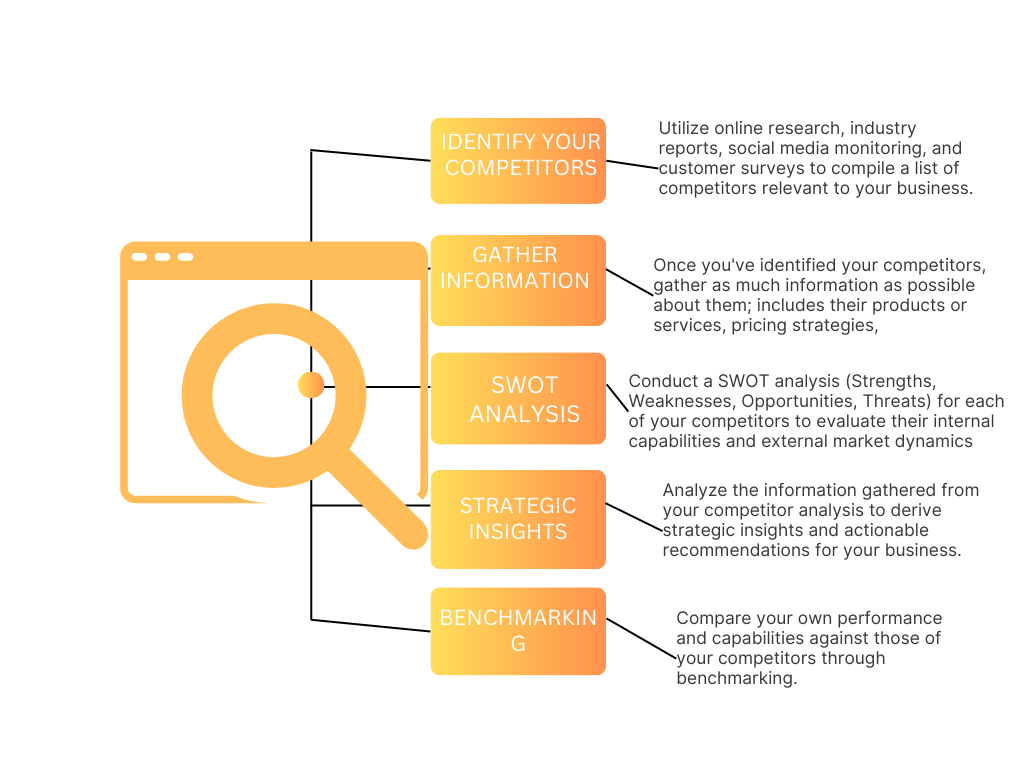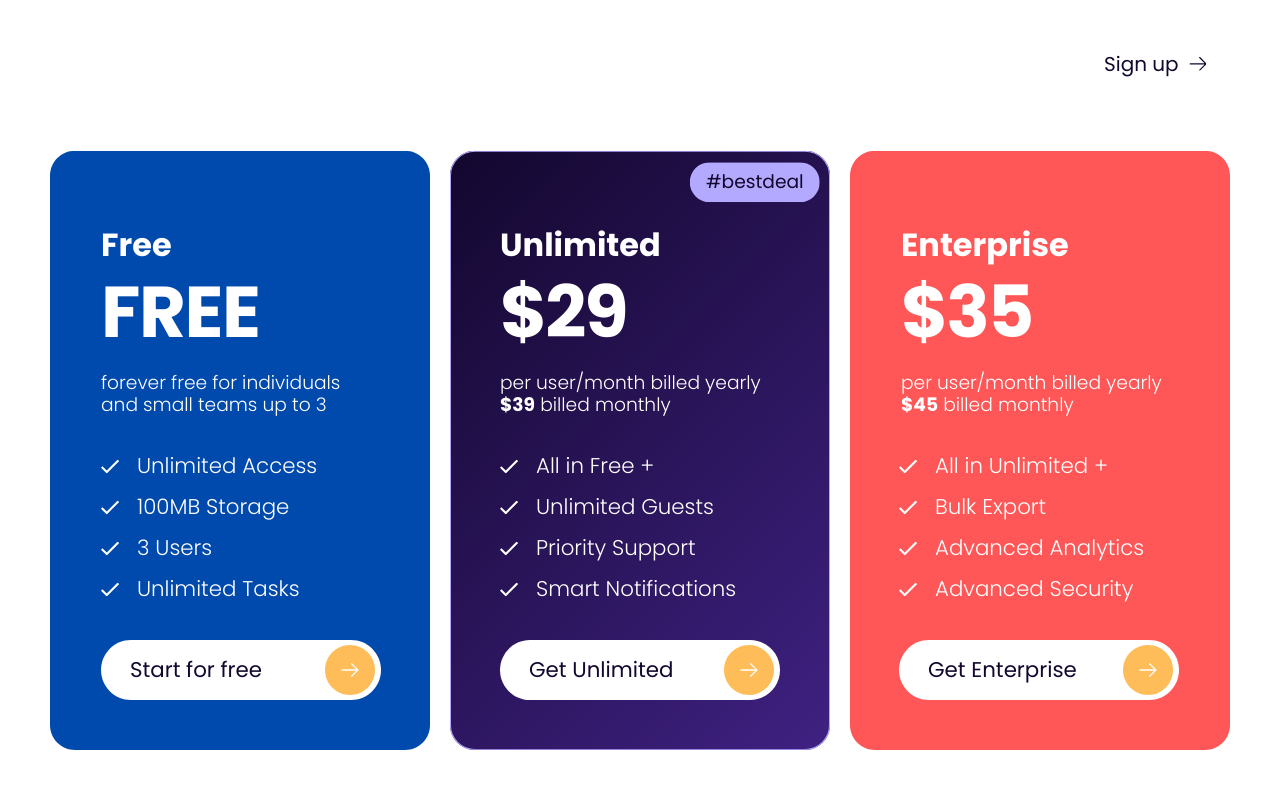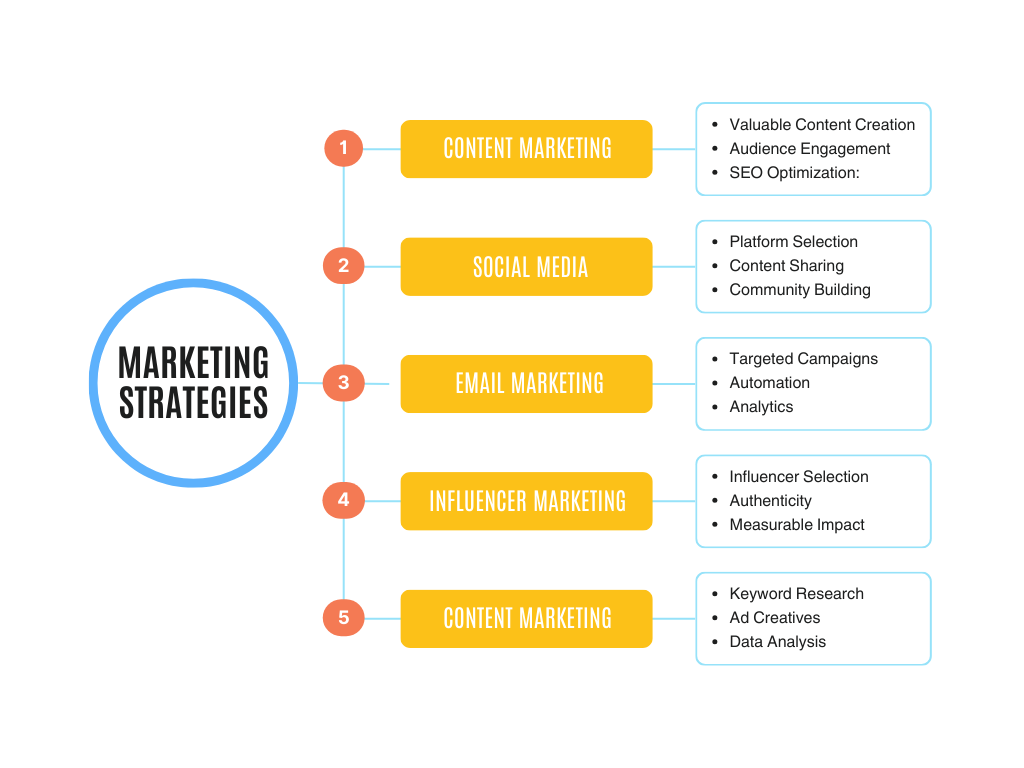Starting a blog is one of the most accessible and potentially lucrative online ventures. Whether you’re looking to share your passion, promote a business, or earn a passive income, blogging offers a platform to express yourself and connect with a global audience. This guide will walk you through the process of starting a blog and earning money from it in 2024.
What is a Blog?
A blog is a regularly updated website or web page, run by an individual or a small group, that is written in an informal or conversational style. Blogs can cover a wide range of topics, from personal experiences and hobbies to professional expertise and niche interests. They include text, images, videos, and links to other websites.
4 Reasons Why You Should Start a Blog in 2024
In 2024, the blogosphere remains a thriving platform to share your insights, experiences, and expertise with the world. As digital connectivity continues to expand, the opportunities for starting a blog have never been greater. Here are 4 reasons why now is the ideal time to start your own blog:
1. Share Your Passion: Blogging allows you to share your interests, hobbies, and expertise with a like-minded community. Whether you’re passionate about travel, food, fashion, or technology, a blog can be the perfect platform to showcase your knowledge and experiences.
2. Build Your Brand: In 2024, personal branding is more important than ever. A blog can help you establish yourself as an authority in your field and showcase your skills and expertise to potential employers or clients.
3. Generate Passive Income: It may take time and effort to build a successful blog, but it can eventually become a source of passive income. Through advertising, sponsored content, affiliate marketing, and selling digital or physical products, you can monetize your blog and earn money while you sleep.
4. Connect with Others: Blogging is a great way to connect with people who share your interests and passions. You can engage with your audience through comments, social media, and email newsletters, building a loyal community around your blog.
7 Steps On How to Start a Blog
Interested in launching your own blog but not sure where to begin? Here are seven essential steps to kickstart your blogging journey. Whether you’re a seasoned writer or a complete beginner, these straightforward steps will help you navigate the process of starting a blog with ease.
1. Define Your Niche: Choose a specific topic or niche that you’re passionate about and knowledgeable in. This could be anything from travel and food to technology or personal development. Narrowing down your focus will help you attract a more targeted audience.
2. Choose a Blogging Platform: There are several blogging platforms available, each with its own set of features and benefits. Popular options include WordPress, Blogger, and Medium. Consider factors such as ease of use, customization options, and scalability when selecting a platform.
3. Pick a Domain Name: Your domain name is your blog’s online address, so choose something catchy, memorable, and relevant to your niche. Keep it short and easy to spell to make it easier for visitors to find and remember your blog.
4. Set Up Hosting: If you choose a self-hosted platform like WordPress.org, you’ll need to set up hosting. Hosting providers like Bluehost, SiteGround, and HostGator offer affordable hosting plans and easy WordPress installation.
5. Design Your Blog: Customize the look and feel of your blog to reflect your brand and appeal to your target audience. Choose a clean and responsive theme, select a color scheme that complements your content, and add a logo and other branding elements.
6. Create Compelling Content: Content is king in the blogging world, so focus on creating high-quality, engaging posts that provide value to your readers. Experiment with different formats such as articles, tutorials, videos, and infographics to keep your content fresh and diverse.
7. Promote Your Blog: Once your blog is up and running, promote it and attract visitors. Utilize social media platforms, guest posting, email marketing, and search engine optimization (SEO) to drive traffic to your blog. Engage with your audience, respond to comments, and network with other bloggers in your niche to grow your blog’s reach and influence.
How to Do Competitor Analysis Step By Step
Conducting a competitor analysis involves examining what other bloggers are doing, identifying their strengths and weaknesses, and understanding their strategies to gain insights for your blog. Here’s how to conduct competitor analysis:
1. Identify Competitors: Start by identifying competitors in your niche. Use search engines, blog directories, and social media platforms to find blogs that cover similar topics or target the same audience as yours.
2. Evaluate Content: Analyze the content on competitor blogs. Look at the topics they cover, the quality of their writing, the depth of their articles, and the engagement they receive from readers (comments, shares, likes). Pay attention to the types of media they use (text, images, videos, infographics) and the frequency of their updates.
3. Assess Design and User Experience: Evaluate the design and user experience of competitor blogs. Consider factors such as website layout, navigation ease, loading speed, mobile responsiveness, and overall aesthetics. A well-designed blog that provides a seamless user experience can attract and retain more visitors.
4. Study SEO Strategies: Examine the SEO strategies employed by competitors. Look for keywords they target, their use of meta tags, URL structures, internal linking strategies, and backlink profiles. Tools like SEMrush, Ahrefs, or Moz can help you analyze their SEO performance and identify opportunities for improvement in your strategy.
5. Analyze Monetization Tactics: Study how competitors monetize their blogs. This could include affiliate marketing, sponsored content, display ads, selling digital products, or offering services. Assess the effectiveness of their monetization strategies and consider how you can adapt or improve upon them for your blog.
6. Review Social Media Presence: Evaluate competitors’ social media presence and activity. Look at the platforms they’re active on, the frequency of their posts, the engagement they receive, and the strategies they use to grow their following and drive traffic to their blog.
7. Examine Audience Engagement: Pay attention to how competitors engage with their audience. Analyze the comments sections, social media interactions, and any other forms of engagement to understand what resonates with their audience and how they build community around their blog.
8. Identify Unique Selling Proposition (USP): Determine what makes each competitor unique and how they differentiate themselves in the crowded blogosphere. This could be their writing style, niche expertise, unique perspective, or any other factor that sets them apart from others.
9. SWOT Analysis: Conduct a SWOT (Strengths, Weaknesses, Opportunities, Threats) analysis for each competitor. Identify their strengths and weaknesses, as well as opportunities and threats in the market. This will help you identify areas where you can capitalize on their weaknesses or find opportunities they may have overlooked.
10. Benchmark Performance: Benchmark your blog against the competitors you’ve analyzed. Identify areas where you excel and where you can improve based on your findings. Use this information to refine your blog strategy and stand out in the competitive landscape.
How To Establish Blog Authority
Authority is the expertise, credibility, and influence an individual or entity possesses in a particular subject or field. It’s not just about having knowledge; it’s also about demonstrating that knowledge effectively and earning the trust and respect of others in that domain. To establish authority on your blog, do the following:
1.Conduct Research: Acquire comprehensive knowledge about the subject by researching and studying various aspects of blogging. These can include; content creation, platform selection, audience targeting, SEO (Search Engine Optimization), monetization strategies, etc.
2. Create Quality Content: Create high-quality blog posts or articles. Let your articles offer valuable information, insights, tips, and guidance. Make sure your content is well-researched, accurate, and up-to-date.
3. Share Personal Experience: If you have personal experience with starting and running a successful blog, share your journey, challenges faced, lessons learned, and successes achieved. Personal anecdotes can enhance your credibility and make your advice more relatable.
4. Utilize Different Media Formats: Besides written content, explore other media formats such as videos, podcasts, infographics, and webinars. These can help diversify your content and reach a wider audience. Each format has its unique appeal and can help you establish authority in different ways.
5. Engage with Your Audience: Interact with your audience through comments, social media, email newsletters, etc. Respond to their questions, provide additional insights, and address their concerns. Engaging with your audience builds trust and helps you understand their needs better.
6. Network with Other Experts: Connect with other bloggers, influencers, and experts in the field of blogging. Collaborate on projects, participate in interviews, contribute guest posts to reputable blogs, and attend industry events to expand your network and enhance your credibility by association.
7. Optimize for SEO: Implement SEO best practices to improve the visibility of your content in search engine results. By ranking high for relevant keywords, you can attract organic traffic to your blog. You can also establish yourself as an authority in the eyes of both search engines and readers.
8. Stay Updated: Keep yourself informed about the latest trends, tools, and techniques in the blogging industry. Regularly update your content to reflect new developments and maintain your authority as a trusted source of information.
How to Choose the Best Blog Platform And Hosting
Selecting the right blog platform and hosting service is important for the success of your online venture. Whether you’re a beginner exploring your options or a seasoned blogger looking to switch providers, continue reading to be able to make informed decisions and lay the foundation for a successful blogging journey.
1. Define Your Needs
Before choosing a platform and hosting, clarify your blogging goals and requirements. Consider factors such as the type of content you’ll create, your target audience, desired features (like customization options, e-commerce integration, etc.), and your technical proficiency.
2. Select a Blogging Platform
Several popular blogging platforms are available, each with pros and cons. Some of the most common ones include:
- WordPress.org: A highly customizable and versatile platform that requires self-hosting.
- WordPress.com: Offers a hosted solution with less customization but is easier to set up.
- Blogger: A simple and user-friendly platform owned by Google.
- Medium: A platform focused on writing and reading quality content, with built-in distribution.
- Ghost: Known for its simplicity and focus on publishing and blogging.
3. Examine Self-hosting vs. Hosted Solutions
If you choose a platform like WordPress.org, you have to find a hosting provider to host your blog. Self-hosting gives you more control and flexibility but requires technical know-how. Hosted solutions like WordPress.com or Blogger handle hosting for you, simplifying the setup process but offering less control.
4. Evaluate Hosting Providers
If you choose self-hosting, research and compare different hosting providers based on factors such as:
- Reliability: Look for providers with a good uptime track record.
- Performance: Consider factors like server speed and resource allocation.
- Support: Make sure the hosting provider offers reliable customer support, especially if you’re inexperienced in managing servers.
- Scalability: Choose a provider that can accommodate your blog’s growth.
Popular hosting providers for WordPress include Bluehost, SiteGround, and WP Engine, but there are many others to consider like Truehost.
Truehost Web Hosting Service Provider
Truehost is a web hosting provider that offers a range of hosting services. These include, shared hosting, VPS hosting, dedicated servers, and cloud hosting. Known for its reliability, affordability, and customer support, Truehost caters to individuals, small businesses, and large enterprises alike. Here are some of the benefits of choosing Truehost as your hosting provider:
- Reliability: Truehost boasts high uptime guarantees, ensuring that your website remains accessible to visitors around the clock. Their robust infrastructure and redundant network architecture minimize the risk of downtime, providing peace of mind to website owners.
- Affordability: Truehost offers competitive pricing plans tailored to suit various budgets and requirements. Whether you’re a startup on a tight budget or a growing business with evolving needs, Truehost provides cost-effective hosting solutions without compromising on quality or performance.
- Scalability: As your website grows, Truehost offers scalable hosting options to accommodate increasing traffic and resource demands. Whether you need additional storage, bandwidth, or processing power, Truehost allows you to easily upgrade your hosting plan to meet your evolving needs.
- Security: Truehost prioritizes website security, implementing robust measures to protect against malware, hacking attempts, and other security threats. With features such as SSL certificates, DDoS protection, and regular security updates, Truehost helps safeguard your website and sensitive data from unauthorized access.
- Customer Support: Truehost provides responsive and knowledgeable customer support to assist users with any technical issues or inquiries. Their support team is available 24/7 via live chat, email, and phone, ensuring prompt assistance and resolution of issues whenever needed.
- User-friendly Interface: Truehost offers intuitive control panels and management tools, making it easy for users to manage their hosting accounts, domains, and website settings. Whether you’re a novice or experienced user, Truehost’s user-friendly interface simplifies the hosting management process.
Register Your Domain Today And Start Blogging
Truehost stands out as a reliable, affordable, and user-friendly hosting provider, making it an excellent choice for individuals and businesses seeking reliable web hosting solutions.
5. Check Pricing and Plans
Compare the pricing and features of different hosting plans to find one that fits your budget and requirements. Consider factors such as the number of websites you can host, storage space, bandwidth limits, and additional features like SSL certificates and backups.
6. Review User Reviews and Recommendations
Read reviews and testimonials from other bloggers who use the platforms and hosting providers you’re considering. Pay attention to their reliability, performance, customer support, and overall user experience.
7. Domain Registration
Register a domain name for your blog. Some hosting providers offer domain registration services, while others require you to purchase a domain separately from a domain registrar like GoDaddy or Namecheap.
8. Install and Set Up Your Blog
Once you’ve chosen a platform and hosting provider, follow their instructions to install and set up your blog. This involves installing the blogging software, configuring settings, choosing a theme, and customizing your blog’s appearance and functionality.
Blog Design: Elements of a Well-designed Blog
A well-designed blog combines aesthetic appeal with functionality to create a seamless user experience. Here are the key elements of a well-designed blog:
1. Clear Navigation: The navigation menu should be intuitive and easy to use, allowing visitors to quickly find the content they’re interested in. Categories, tags, and a search bar can also help users navigate through the blog.
2. Responsive Design: With the increasing use of mobile devices, it’s important that your blog is responsive and looks good on all screen sizes. This ensures a consistent experience for users across different devices.
3. Attractive Visuals: High-quality images, videos, and graphics can enhance the visual appeal of your blog posts and make them more engaging. Use relevant visuals to your content and help to communicate your message effectively.
4. Readable Typography: Choose readable fonts and font sizes for your blog content. Make sure the text is easy to read, with sufficient contrast against the background. Use headings, subheadings, and bullet points to break up long blocks of text and improve readability.
5. Whitespace: Incorporate plenty of whitespace around your content to give it room to breathe. Whitespace helps to improve readability and makes your blog look clean and uncluttered.
6. Consistent Branding: Maintain consistent branding across your blog, including colors, fonts, and imagery. This helps to reinforce your brand identity and make your blog recognizable to visitors.
7. Fast Loading Speed: Optimize your blog for speed to ensure fast loading times. Slow-loading websites can lead to high bounce rates and negatively impact user experience.
8. Engaging Call-to-Actions (CTAs): Encourage user interaction with clear and compelling CTAs. Whether inviting readers to leave a comment, share the post on social media, or subscribe to your newsletter, CTAs can help keep users engaged and drive desired actions.
9. Social Sharing Buttons: Make it easy for readers to share your content by including social sharing buttons on your blog posts. This can help to increase traffic and attract more visitors to your blog.
10. SEO Optimization: Optimize your blog for search engines to improve its visibility and attract organic traffic. Use relevant keywords, meta tags, and descriptive URLs to help search engines understand what your content is about.
11. Accessible Design: Make sure your blog is accessible to users with disabilities by following accessibility best practices. This includes using descriptive alt text for images, providing captions for videos, and ensuring that your blog is navigable using a keyboard.
6 SEO Strategies For Content Creation And Promotion
Content creation strategies exhibit a diverse range of approaches, tailored to the specific platform, target audience, and objectives of the creator. Here are 6 prevalent strategies for content creation:
1. Understand Your Audience: Before creating any content, have a deep understanding of your target audience. What are their interests, pain points, preferences, and behaviors? Tailor your content to resonate with them.
2. Set Clear Goals: Define what you want to achieve with your content. Are you looking to increase brand awareness, generate leads, drive sales, or establish thought leadership? Your goals will influence the type of content you create and how you measure success.
3. Create A Content Calendar: Plan your content with a content calendar. This helps you stay organized, ensure consistency, and align your content with key events or themes relevant to your audience.
4. Diversify Content Formats: Experiment with different content formats to keep your audience engaged. This could include blog posts, videos, infographics, podcasts, webinars, social media posts, and more.
5. Engage with Your Audience : Encourage interaction and engagement with your content by asking questions, responding to comments, and fostering communitism. This strengthens relationships with your audience and provides valuable feedback for future content.
6. Monitor and Analyze Performance: Regularly track key metrics such as engagement, reach, conversion rates, and ROI. This enables you to assess the effectiveness of your content and make informed adjustments to your strategy.
Monetization Strategies For Your Blog
Monetizing a blog can be exciting to turn your passion into profit. Exploring effective monetization strategies for your blog opens up a world of opportunities to generate revenue and maximize your online presence. Here’s a variety of proven methods and tactics designed to help you monetize your blog effectively and sustainably:
1. Display Targeted Ads
One of the most common ways to monetize your blog is through display advertising. Programs like Google AdSense allow bloggers to earn money by displaying targeted ads on their sites. The more traffic your blog receives, the more you can earn from these ads.
2. Register For Affiliate Marketing
Affiliate marketing involves promoting products or services on your blog. You earn a commission for every sale or lead generated through your referral. Many companies offer affiliate programs. This makes it easy to find products or services that align with your blog’s niche.
3. Promote Sponsored Content
Brands may pay you to create content that promotes their products or services. This could include sponsored blog posts, reviews, or social media shout-outs. Disclose sponsored content to maintain transparency with your audience.
4. Sell Digital Products
If you have expertise in a particular area, you can create and sell digital products like Ebooks, online courses, or printables. This allows you to monetize your knowledge and provide value to your audience.
5. Offer Services
If your website specializes in article writing, consider offering services aligned with your expertise. For instance, you could provide content creation packages tailored to different industries or niches. You might offer editing and proofreading services to ensure that clients receive polished and professional content.
6. Create Membership Sites
Creating a membership site where users pay a subscription fee for access to premium content or resources can be a lucrative monetization strategy. This works well for blogs that offer specialized or in-depth content.
7. Offer Freelancing Services
As a blogger, you can leverage your writing skills to offer freelance writing services. This could include writing articles, blog posts, or other content for other websites or publications.
8. Offer Consulting or Coaching Services
If you’re an expert in your field, you could offer consulting or coaching services to individuals or businesses looking for guidance. This can be a high-value monetization strategy that leverages your expertise.
9. Host Events or Workshops
Hosting events, workshops, or webinars related to your blog’s niche can be a great way to monetize your blog. This can also help you to engage with your audience in a more personal way.
10. Sell Physical Products
If your blog has a strong brand and following, you could consider selling physical products related to your niche. This could include merchandise, tools, or products that complement your blog content.
Get SEO-friendly Articles: Start a Blog And Earn In 2024
Step into the world of blogging in 2024, and discover a realm brimming with opportunities for budding writers and entrepreneurs. Creating compelling SEO content in today’s digital landscape demands more than mere knowledge; it calls for mastery, ingenuity, and a profound grasp of your audience’s desires. As seasoned professionals in the blogging sphere, we offer SEO article writing services. We create captivating, SEO-optimized content tailored to your brand’s identity and goals. With a steadfast dedication to excellence and a fervor for storytelling, and our experience, we extend an invitation to harness our expertise. This can help you amplify your online presence and realize your blogging aspirations.
As seasoned professionals in the blogging sphere, we offer SEO article writing services. We create captivating, SEO-optimized content tailored to your brand’s identity and goals. With a steadfast dedication to excellence and a fervor for storytelling, and our experience, we extend an invitation to harness our expertise. This can help you amplify your online presence and realize your blogging aspirations.
Elevate your new blog with our budget-friendly, informative, and SEO-friendly blogs, igniting visibility and traffic for your platform.


